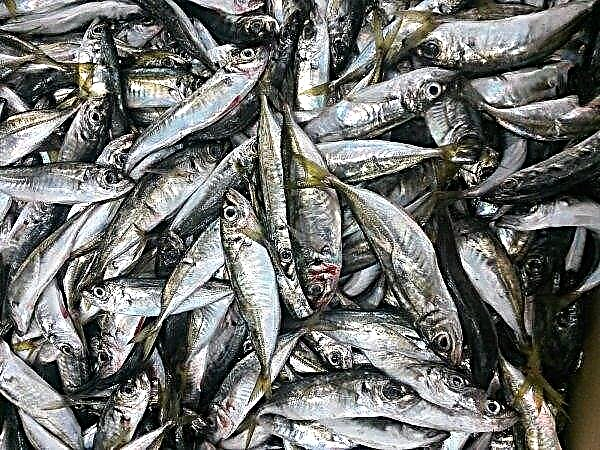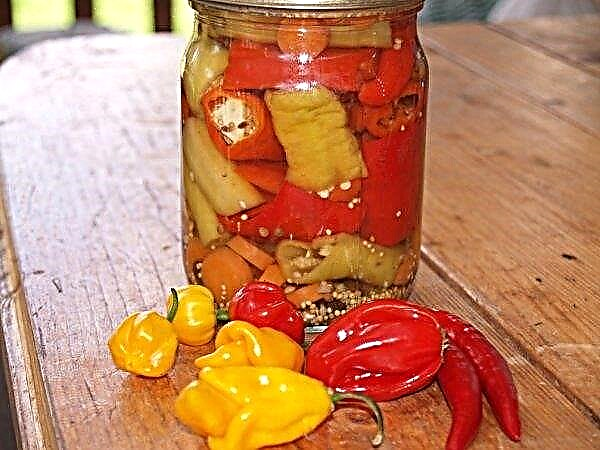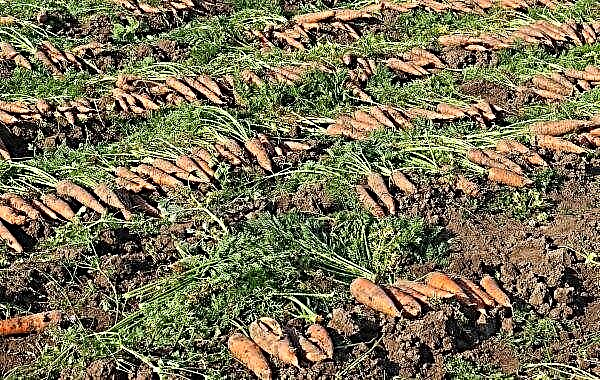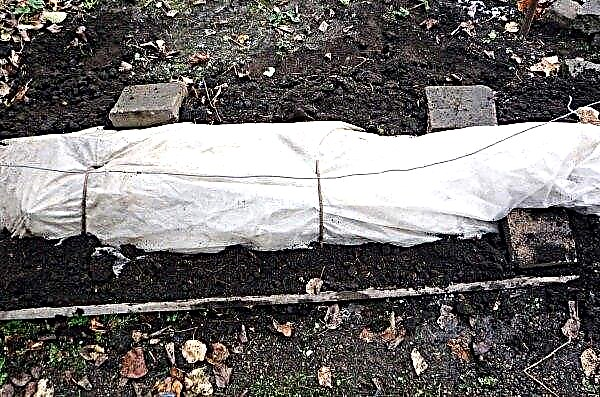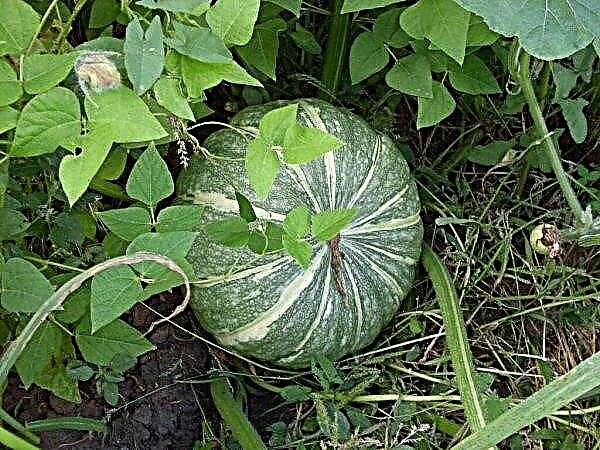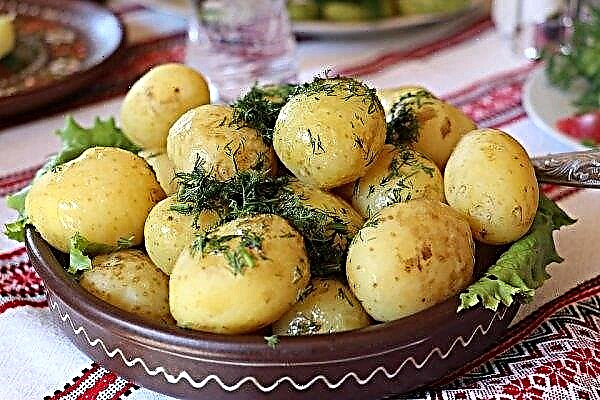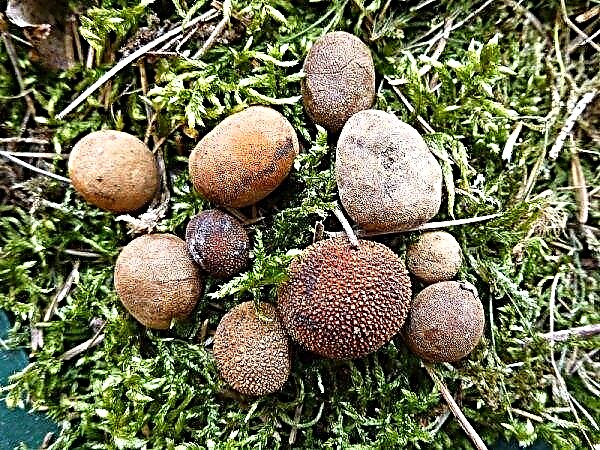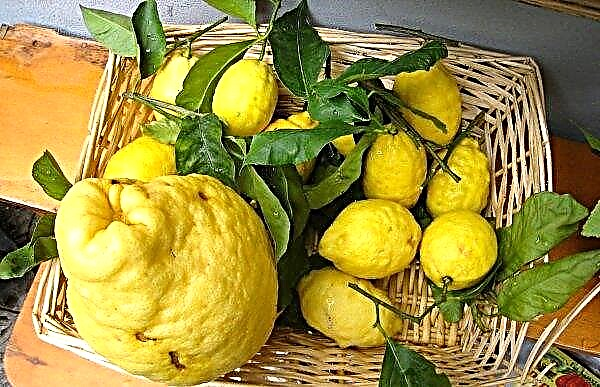The cultivation of home-made tobacco was once commonplace and the main source of income for many families. Its popularity was based on the simplicity of cultivation and the high cost of finished raw materials. Today, despite the rapid cheapening of tobacco products, the interest of farmers in them has not faded. How to grow tobacco in the garden yourself, which varieties to prefer and what are the oriental varieties - read about this later in the article.
History of Oriental Tobacco
Oriental cigar and cigarette tobacco is famous for its productivity and vitality. It is grown in the highlands of the southeastern regions of Europe, where other varieties do not take root. The leaders in cultivating this crop are Greece and Turkey.
Did you know? The term "smoking" appeared only at the end of the XVII century. Before that, the process of inhaling smoke was called "dry drinking."
The name Oriental unites several varieties of tobacco that were produced in the countries of the Eastern Mediterranean, in the Balkans and in the Black Sea, where in ancient times the Ottoman possessions were located. In connection with the widespread prevalence of culture in everyday life, a lot of its local names arose from the names of settlements. For example, Smirna, Samsun, Bursa, Izmir, Drama.
It is believed that the seeds of this unpretentious plant were brought to the Ottoman lands by European merchants around the 16th-17th centuries. Despite the hostility of Sultan Marat IV and his interpretation of tobacco as objectionable to Allah and the dogmas of the Qur'an, culture quickly spread among the local population.
 Over time, farmers began to cultivate Oriental not only for their needs, but also for sale. Soon, the ruler of the empire saw the economic benefits of the popularity of this product.
Over time, farmers began to cultivate Oriental not only for their needs, but also for sale. Soon, the ruler of the empire saw the economic benefits of the popularity of this product.
Since 1667, Oriental tobacco has been allowed for home cultivation, consumption and sale. The truth was levied on a similar occupation with taxes, which not every merchant could afford.
Description of tobacco Oriental
Tobacco variety Oriental has many similarities with its relatives, but differs in the lower content of sugary substances, astringent taste and densely saturated aroma. Growing this one-year grassy crop is not difficult even for lazy landowners.
Growing this one-year grassy crop is not difficult even for lazy landowners.
Oriental tobacco is well adapted to poor soils, frequent droughts, overly hot summers and autumn. From adverse climatic conditions, tobacco leaves are protected by a special wax coating enriched with natural essential oils, as a result of which they never dry out.
Did you know? The term "nicotine" appeared in honor of French Ambassador Jean Nico, who brought tobacco to his homeland from Portugal. He presented the French as a panacea for many diseases.
Powerful stems of Oriental tobacco varieties grow to a height of 3 m and do not branch. The shape of the foliage, depending on the variety, can be narrow-lanceolate or broad-egg. It differs from other varieties with a dense wax coating with a thick pile.
Culture blooms in the second decade of July for 25–40 days. Her purple or scarlet buds are collected in panicle inflorescences.
Each Oriental brand of tobacco is characterized by special characteristics. But it is impossible to find it in its pure form in the modern market, since mixtures are delivered there. The presence in the composition of the tobacco varieties of interest is indicated by the special labeling “Oriental Tobacco”. You should also pay attention to the dominant species in the composition of the mixture.
The main varieties of tobacco Oriental
The specificity of Turkish-Greek tobacco was appreciated far beyond the borders of its historical homeland. Due to its high productivity and special spicy taste, the plant began to be cultivated in Pakistan, Kyrgyzstan, Azerbaijan, Iran, Moldova, Ukraine, Bulgaria and southeast Russia.
It is characteristic that in each region a product ready for use is very different in its piquancy. Some varieties are distinguished by the saturation of resinous substances. Because of these properties, they are preferred as the basis for Oriental tobacco blends. And others are characterized by softness and are used exclusively as a seasoning and spicy variety.
Did you know? In the modern market, cigarettes are the most common and sought after goods. To make them, tobacco is cultivated in 84 countries.
Edirne
Today, the main cultivation of the plant is concentrated in several areas of the European part of Turkey Thrace (Kırklareli, Edirne, Uzunköprü, Şarköy, Babaeski, Lüleburgaz, Tekirdağ and Çorlu).
The variety is characterized by medium-sized broad leaves. At the stage of complete fermentation, they are filled with different shades of red.
The taste of tobacco is spicy, pronounced, with light sweetish notes and simultaneous bitterness. About 1.5–2% of nicotine was found in the composition of a dry plant.
Balikesir
The center of production of this tobacco variety is considered to be the southern regions of Agonya, Balikesir, Gönen, Yenice, Biga and Susurluk. It is typical that taste specialists of natural raw materials can accurately determine the location of cultivation of a plant.
Balikesir has a sharp specific odor, fine foliage texture, as well as an increased nicotine content (within 2.5%). Because of this, it is highly regarded in the global market. Often the product is used as the main component of tube mixtures.
ADIYAMAN
The variety is cultivated on light breathable and well-drained soils in regions such as Adıyaman, Pertek, Malatya, Akçadağ, Siverek, Kahta and Hozat. But the best examples of ADIYAMAN varieties grow in the fields near the villages of Bulam and Celikan.
Experts consider its main feature relatively large and wide sheet plates of yellow or light red color with a moderate dense texture.. Even after drying, elastic dark veins remain convex on them. The taste is inherent moderate bitter and sweet. The composition contains no more than 2% nicotine.
Important! Tobacco drying should be done naturally. It’s better to choose a shady place away from dusty roads and production..
Basma ardabodju
The real raw materials of this variety are collected on loose loams located along the Yeşilırmak River. To cultivate this type of tobacco, the sunny valleys between the Turkish hills are ideal.
Variety name due to a feature of foliage to twist and how to stick to each other during the drying process. Basma Ardabodju can be recognized by small and slightly widened sheet plates, with a moderately thick texture, elastic smooth surface and velvety back.
After fermentation, the raw material acquires a strong aroma and a specific yellow-red hue. The composition of this tobacco contains not more than 1% nicotine and a lot of sugar, palpable when smoking. Therefore, it is added to tobacco mixtures with a high percentage of bitterness to give them sweetness and softness.
Tobacco planting at home
The conditions for growing Oriental tobaccos depend on the particular variety. Some people prefer high humidity and temperature, while others feel comfortable at medium temperatures and drought. But the technology and planting time are the same for all types.
Planning sowing seedlings recommended in the last February weeks or in early March. Planting seedlings in open ground is best done in the second half of spring.
For planting, plants choose a well-lit and protected from through cold winds area with light, well-drained, air- and permeable soil.
Important! To improve the quality of tobacco raw materials, it is recommended to remove half of the peduncles from the stems during flowering. The same applies to the stepsons formed on the site of the removed stepsons..
The day before sowing, it is advisable to pre-prepare the planting material. To this end, it is kept for several hours in a solution of any growth stimulant (Emistim, Kornevin, Ekosil), after which it is wrapped with a damp cloth and left to swell (in general, the preparation procedure lasts about 24 hours). Some farmers advise preparing an aqueous solution of potassium nitrate or tartaric acid for soaking to accelerate seedlings.
Some farmers advise preparing an aqueous solution of potassium nitrate or tartaric acid for soaking to accelerate seedlings.
The swollen grains must be washed in room temperature water and dried. Then they are laid out on a damp cloth in a shallow ceramic container for germination. Before the first shoots appear, it is placed in a warm place, maintaining the level of humidity in the vessel.
 Sprouts begin to hatch for 3-4 days. You should not wait until the seedlings are excessively large, since in this form they can suffer during planting.
Sprouts begin to hatch for 3-4 days. You should not wait until the seedlings are excessively large, since in this form they can suffer during planting.
Sprouted 2/3 seeds are dried again, and then gently mixed with sanitized dry sand. The resulting mixture is plated on a moist substrate of humus and river sand, prepared in a ratio of 3: 1. Top tobacco grains must be closed with a layer of raw soil with a thickness of 3-5 cm.
With the seedling method of planting a crop, it is advisable to immediately place the planting material in peat cassettes or pots. This will protect the fragile stems and roots from breaking when diving. Keep in mind that tobacco of any kind reacts very painfully to any invasion, including transplant.
At the final stage, it is recommended to pour the sown bed with a thick strainer, then cover with plastic wrap and leave it in a warm, well-lit place.
Important! Do not place tobacco containers in direct sunlight. Look for a spot with diffused light.
Features of tobacco care at home
In the future culture, moderate moisture, nutritious soil, timely pinching, as well as preventive treatments against diseases and pests are required for comfortable development.
Watering
Moisture is important for every Oriental tobacco brand.. Therefore, the plants are watered to the extent that the upper soil layer dries. It is important to prevent the formation of crust, as well as waterlogging near the stems. If there is a shortage of water, the growth of bushes will stop, and in case of excess, the risks of infection with bacterial and fungal diseases increase. Based on the growth of stems and significant biomass, experts advise watering the plants every day in small portions, especially at the initial stages of development.
Based on the growth of stems and significant biomass, experts advise watering the plants every day in small portions, especially at the initial stages of development.
Pile on tobacco leaves delays the evaporation of moisture, but this does not save the nightshade crop from the need for moisture. In some varieties of Oriental, it can vary between 48–78%.
Top dressing
For the entire growth period, tobacco bushes will require at least 3 top dressings. The first is carried out several days after the seedlings are planted in a permanent place, and the next every 2-3 weeks.
Since leaves are the most valuable in tobacco, nitrogen-containing substances are recommended to stimulate their growth. It is advisable to nourish the bushes with a solution of chicken infusion (prepared in a ratio of 1:10) and complex mineral fertilizers.
In case of developmental delay, foliage deformation and its premature yellowing, the use of irrigation with the participation of a nutrient solution consisting of ammonium nitrate (30 g), potassium sulfate or chloride (20 g) and water at room temperature (10 l) is shown.
Important! Tobacco seedlings are transplanted to a permanent place after 40–45 days of growth.
Weeding
Pure loose beds are not a whim of artsy aesthetes, but important agrotechnical requirements for the care of any crop. In a clogged area, in a constant struggle for nutrients, tobacco will not be able to fully develop. In addition, weeds attract harmful insects and are carriers of many diseases.
Therefore, it is important after each watering, to the extent that the soil dries, with a hat, loosen the aisles, thereby improving aeration of the roots and at the same time getting rid of unnecessary vegetation. In addition, periodic manual row weeding is required.
Diseases and Pests
Ka and all other nightshade cousins, tobacco is vulnerable to:
- root rot (black, seedlings and dry);

- peronosporosis;

- powdery mildew;

- alternariosis;

- apical chlorosis;

- tobacco or plain mosaic;

- white motley.

In case of illness, the use of fungicides is recommended. Their choice depends on the degree of progression of the disease and its etiology. For example:
- 50% Benlata solution will help to cope with any kind of rot;
- powdery mildew, including false, as well as bacterial mountain ash and various fungal diseases in the early stages can be cured with the help of "Polycarbacin", "Maxim", "Skor".
Of the pests, tobacco can annoy:
- peach aphid (dangerous due to the fact that it sucks out juice from the leaves and is a peddler of difficult to treat viral infections);

- thrips (degrades the quality of the finished raw material by bites of sheet plates, because of which they prematurely fade and crumble);

- wireworms (damage the roots, as a result of which the entire bush withers).

Did you know? The city authorities of one of the cities of Indiana (USA) banned smoking monkeys.
Tobacco collection and processing
Unlike other popular varieties of Oriental tobacco, when harvesting, it requires cutting the entire bush. From the moment of planting the seeds to harvest no more than 17 weeks pass. Then the leaf plates stop their growth and reach their maximum density.
Mature foliage can be recognized by a lighter color. If the bush has dark green unripe specimens, they are left for several weeks. In some regions, the separation of foliage from bushes is carried out in stages, dividing them into 3 parts. The collection of raw materials is planned only in the evening.
The collection of raw materials is planned only in the evening.
Then the removed leaves are sorted and suspended in bunches in an open area to wither. After this stage, the raw materials are placed for drying in a dark, dry room, where the air temperature is +27 ... + 30ºC.
At a further stage of processing, the tobacco must undergo fermentation, as a result of which the color of its leaves will radically change. Characteristically, this process depends on the traditions of the particular region in which the variety was grown.
Some farmers resort to natural fermentation, while others change the physical properties of tobacco leaves by using biological or chemical effects on it. For example, some types of tobacco for this process take about 5 years (it is stored in special barrels or bales).
At home, fermentation is carried out according to the following algorithm:
- Sort solid leaf plates with a uniform yellowish color. If there are green spots on them, cut them so as not to spoil the raw materials.
- Moisten the workpiece from the spray gun on both sides and stack it in a pile. Cover with polyethylene.
- After a day, carefully remove the middle thick vein on each sheet and check their moisture content. Moisten if necessary. Please note that a high-quality sheet should not be raw, break on bends, and also it may not have signs of freshness. Ideally, the structure of the plates resembles an elastic soft fabric.In case of excess moisture, re-drying is required.
- Raw materials ready for fermentation are crushed into strips and packaged in glass containers with hermetic lids. It is important that the vessel is 2/3 full.
- Closed containers are placed in the oven and incubated for several hours at a temperature of 50ºC. The procedure is repeated for a week, periodically shaking the containers and rearranging them. Make sure that there is no condensation on the walls of the vessels. Its appearance testifies to the mistakes made at the previous stages of procurement.
- Quality tobacco on the 2-3rd day of the fermentation process begins to secrete a sharp honey or fruity aroma. After processing, it must be poured onto a flat surface, slightly dried, and then stored in any hermetically sealed container.
Oriental tobacco varieties compare favorably with other popular species. The process of growing them is simple and in many ways similar to garden solanaceous crops. However, the procurement and processing of natural raw materials requires certain knowledge and skills.












